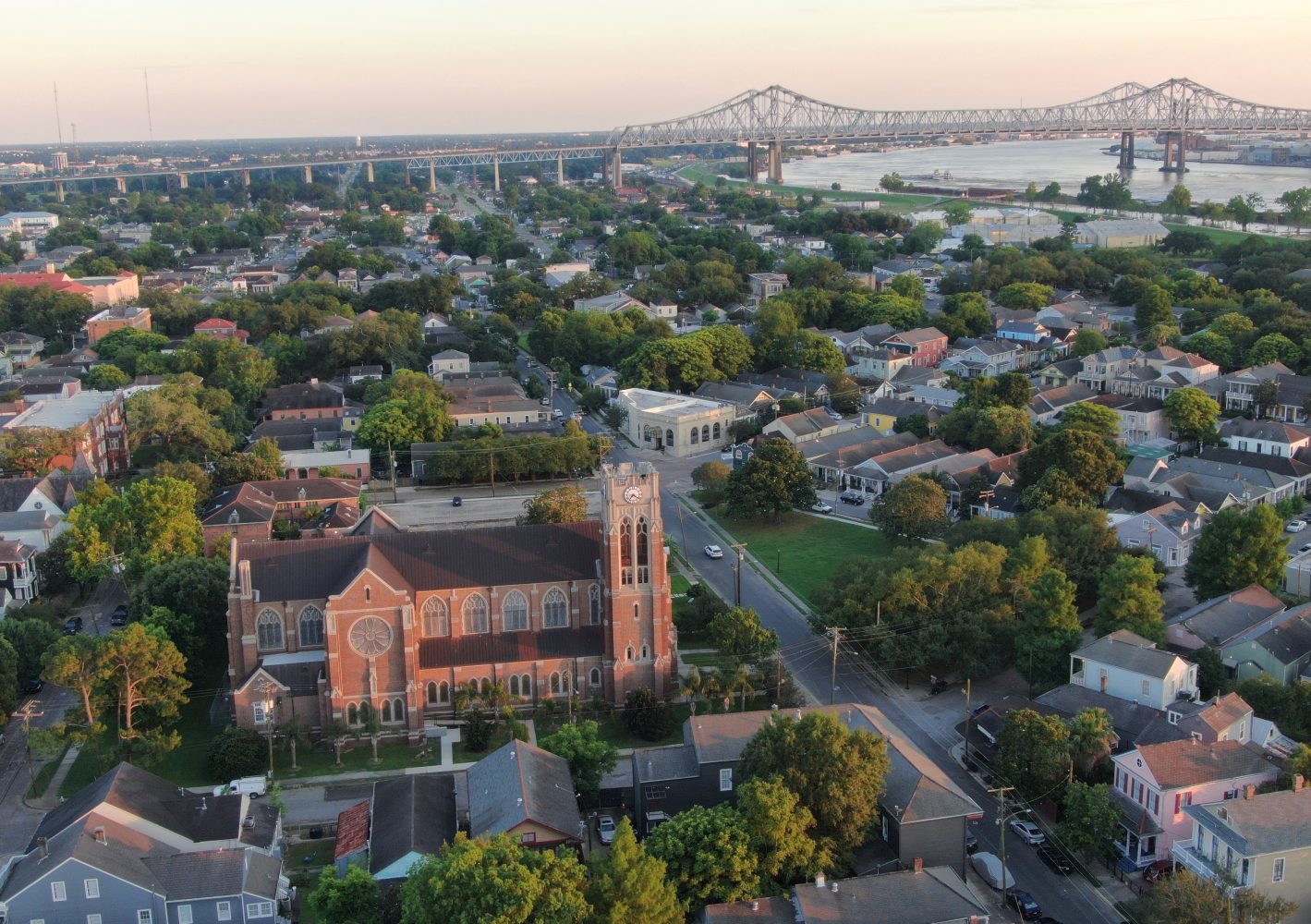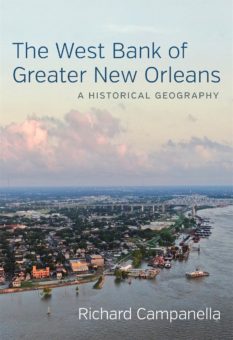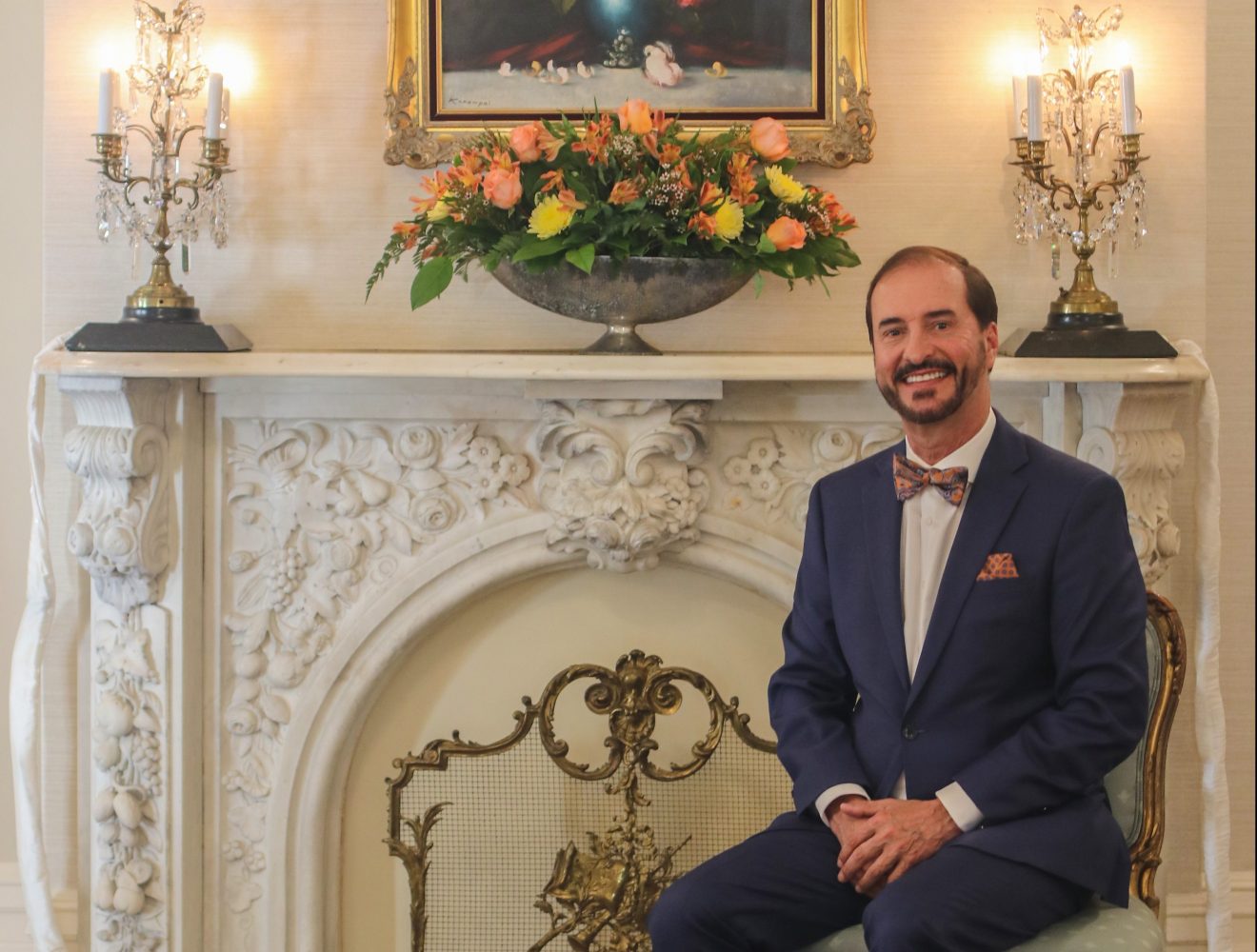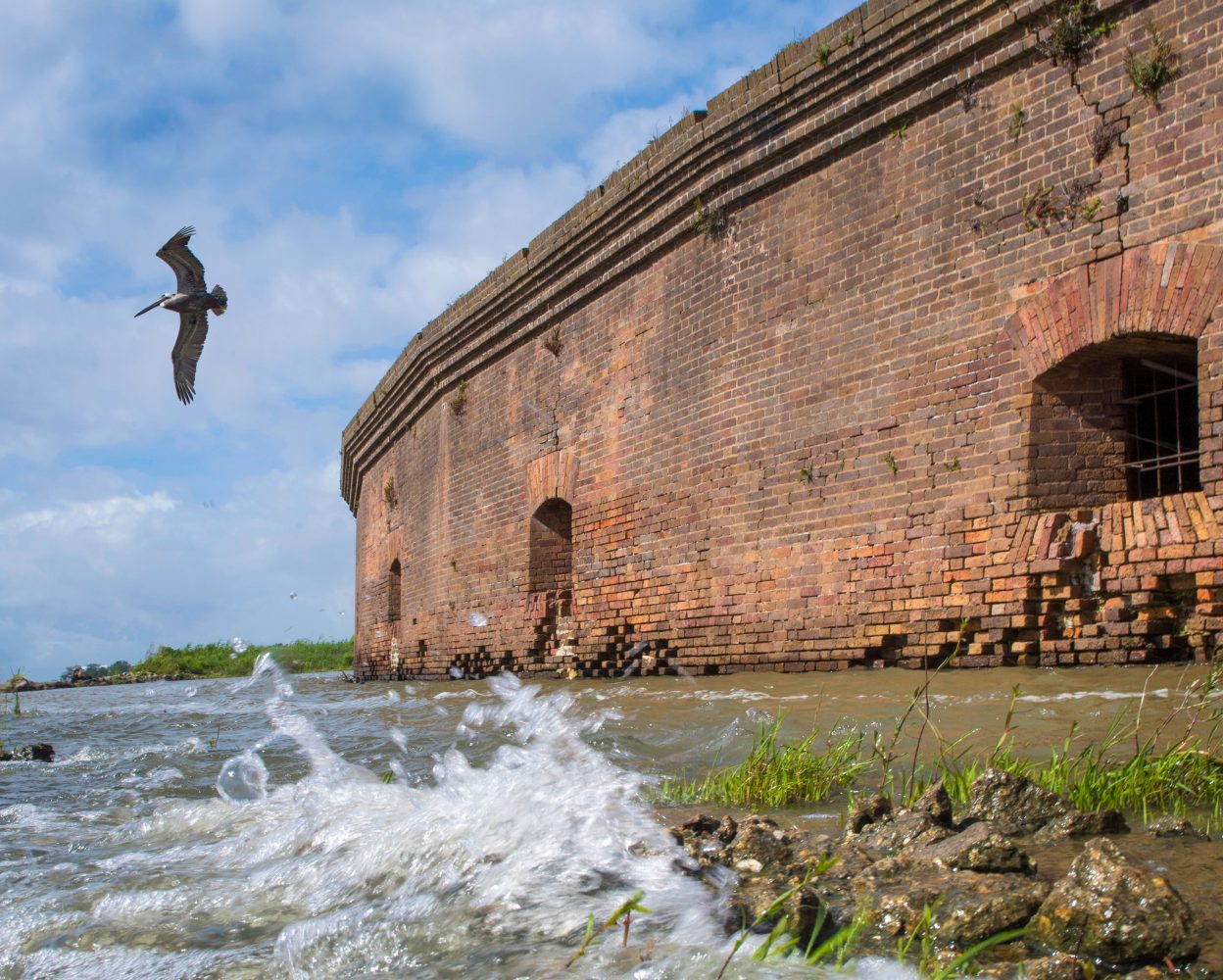This story appeared in the June issue of PRC’s Preservation in Print magazine. Editor’s Note: Featured here are excerpts from the introduction and conclusion of The West Bank of Greater New Orleans — A Historical Geography (LSU Press, 2020), by geographer and long-time Preservation in Print writer Richard Campanella, associate dean for research at the Tulane School of Architecture.
French Explorers called it the “left bank,” because it was gauche as they ascended the Mississippi. Mariners later called it the “right bank,” and still do — more properly the “right descending bank.” New Orleanians in the 1800s also called it the “right bank,” as Parisians do of the Seine, else “across the river,” “over the river,” or “opposite the city.” Not until the 1900s did the vernacular converge on “West Side” and “West Bank,” the latter finally prevailing. Federal highway signs fused the words into “Westbank” so as not to imply a cardinal direction — for, as New Orleanians love to point out, the West Bank lies east of downtown, beneath the rising sun.
The West Bank has been a vital part of greater New Orleans since the city’s inception. It has been the Kansas, the Birmingham, the Norfolk, Atlanta, Pullman, and Fort Worth of the metropolis — that is, its breadbasket, foundry, shipbuilder, railroad terminal, train manufacturer, and livestock hub. It had been the Gulf South’s St. Louis, in that it had a diversified industrial sector as well as a riverine, mercantilist, and agricultural economy. It served as a jumping-off point to the Western frontier, and a Cannery Row for the “great thalassic littoral” to the south. The West Bank has also been the Queens and Oakland of New Orleans: an affordable if rather plain purlieus, proud but not pretentious, pleasant if not prominent, comfortable in its own skin — even if at times thin-skinned vis-à-vis the grandiloquence of its cross-river counterpart. A majority-black sub-region of a majority-white greater metropolitan area, the West Bank is home to some of the most diverse demographics in the region, including many immigrants. Yet it also has substantial populations of deep-rooted locals, folks who speak with New Orleans accents, who practice old cultural traits with a minimum of pomp and self-awareness, and, in some cases, who retain family ownership of lands held since antebellum times. The West Bank makes up 30 percent of the metro population, and a commensurate amount of its urbanized footprint. It is, in short, integral to greater New Orleans in every way.
Yet, until now, the story of the West Bank has never been told holistically, on its own terms. Most books about New Orleans — and there are thousands — treat it as a sideshow or an afterthought, if at all. The limited literature on the West Bank has been at the community level, and published only locally. Various dissertations and government reports have been written on certain West Bank topics. But a full-length, in-depth book about the whole sub-region? You’ll find plenty about that other West Bank, in the eastern Mediterranean, but none about the one on the lower Mississippi.
Advertisement
This book positions the West Bank front-and-center, viewing it as a genuine sub-region unto itself, with more holding it together as a social and economic space than dividing it by various jurisdictions. It understands West Bankers to have had agency in their own place-making, and challenges the notion that their story is subsidiary to a more important narrative across the river.
The West Bank of Greater New Orleans is not a traditional history, of mayoral administrations and important political figures such as Martin Behrman and John Alario. Nor is it a cultural history, paying homage to beloved natives like Mel Ott and Frankie Ford, or notable restaurants, such as Mosca’s. (I am fascinated by the regularity with which East Bankers mention Mosca’s whenever the West Bank comes up in conversation.) Rather, it is a historical geography — that is, a spatial explanation of how the West Bank’s landscape came into form: its terrain, environment, peoples, land use, jurisdictions, waterways, industries, infrastructure, systems, neighborhoods, and settlement patterns, past and present. It explores the players, power structures, and decisions behind those landscape transformations, and their contexts, contingencies, and consequences. The West Bank of Greater New Orleans explains how the map of this sub-region came into shape, and how this place came to be.
I did not employ fixed boundaries of what was inside or outside my study area; as a geographer, I tend to resist such artificial lines. I instead used a core/periphery approach, in which the emphasis is on the Algiers-Gretna-Harvey-Marrero-Westwego core of the urbanized West Bank, but not to the exclusion of important places toward the periphery, such as Belle Chasse, Avondale and Waggaman, the Nine Mile Point and English Turn promontories, Lafitte, and even Grand Isle. There are times when the regionality of the West Bank becomes one-and-the-same with the Barataria Basin, or extends out to the German and Acadian coasts, even to Texas. If the evidence took me to the periphery, I went there — but never to the point of losing sight of the core….

An aerial view of Algiers Point, with Holy Name of Mary Catholic Church in the foreground and the Crescent City Connection bridge in the background. Photo by Marco Rasi.
The world abounds in West Banks. Just about every city has one — not literally or nominally, of course, but phenomenologically. They have to, because the working families and gritty industries that keep cities running have to be somewhere, and they’ve been pushed out of the historic center by bistros and boutiques. The West Banks of the world are separate yet near their urban cores, apart yet convenient, a spacious counterpart to inner-city crowding and costs. Historically, this made them attractive for land uses like truck farms and manufacturing, and for the folks who worked those jobs, to reside and raise their families.
Yet as ubiquitous as they are, the world’s West Banks defy a perfect, pat term, probably because they draw so little scholarly attention. “Suburbs” doesn’t quite do it, because, as we have seen for New Orleans’ West Bank, some communities therein began as a centuries-old concinnity of nucleated villages and are “cities” by any definition. “Inner suburb” or “trolley suburb” don’t work either, because, unlike the faubourgs and banlieues of the East Bank, there was no primary bourg to which abutting neighborhoods could attach. Nor do the jargon terms “exurbs,” “beta cities,” or “edge cities,” all of which miss the mark. Subrural? Subtopia? Interurban? Ethnoburbs? Inner-ring suburbs? Second-hand suburbs? All true; none perfect.
 The West Banks of the world, and our West Bank, are at once working-class and middle-class, mostly modern yet historically undergirded, suburban and interurban, dependent on the urban core yet increasingly autarkic. Their “hybrid quality,” wrote Amanda Holson Hurley in her book Radical Suburbs, “confounds the neat binaries of town and country, village and city, manmade and natural,” such that their apparent exceptions—the West Bank’s many affluent communities, for example — are not really exceptions but evidence of their variability.
The West Banks of the world, and our West Bank, are at once working-class and middle-class, mostly modern yet historically undergirded, suburban and interurban, dependent on the urban core yet increasingly autarkic. Their “hybrid quality,” wrote Amanda Holson Hurley in her book Radical Suburbs, “confounds the neat binaries of town and country, village and city, manmade and natural,” such that their apparent exceptions—the West Bank’s many affluent communities, for example — are not really exceptions but evidence of their variability.
West Banks are typically liminal, marginal, and ordinary to the eyes of those who don’t live there. To those who do, they are home — decent, affordable, and pleasant. Maybe they defy a perfect term because those who know them best aren’t in the business of coining academic cant. Urbanists, by their very nature, spend little time studying suburbs as legitimate environments, despite that most Americans live there, and more continue to move there than to the trendy inner-cities that get all the attention. To be sure, the academy is investigating emerging suburban topics like diversity and inequity, and academic architects are increasingly making the case for “retrofitting suburbia” for livability and sustainability. But in the meanwhile, too many urbanists still disdain and avoid suburbia, and Urban Studies programs outnumber Suburban Studies a hundred to one. The West Banks of the world, it seems, will likely persevere in their quotidian normalcy, unmolested by scholarly inquiry….
Perhaps this enduring localism is the up-side to being ignored. Living outside the limelight, in the shadows of the rambunctious, has made the West Bank a place where folks can live affordably, where old New Orleans perseveres, and where future New Orleans has found a home.
Richard Campanella is a geographer with the Tulane School of Architecture and author of The West Bank of Greater New Orleans; Cityscapes of New Orleans; Bourbon Street: A History; and Bienville’s Dilemma. Campanella may be reached through richcampanella.com, rcampane@tulane.edu, or @nolacampanella on Twitter.
Advertisements








